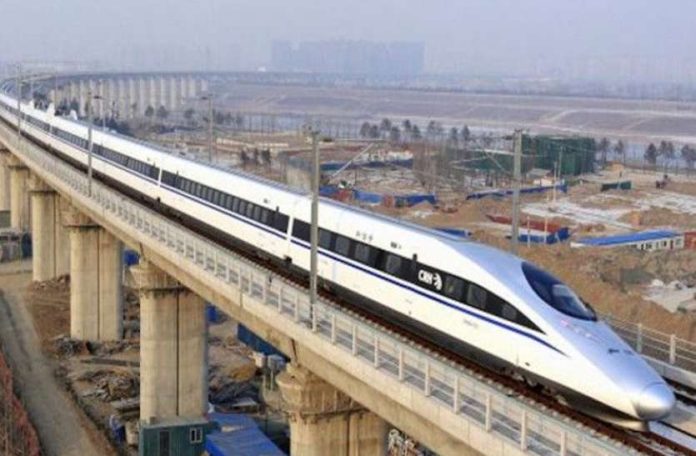New Delhi, Jan 11: With the commencement of aerial ground survey from Greater Noida for the proposed bullet train between Delhi and Varanasi route, the work on the ambitious high speed rail corridor project in the section has gathered momentum.
National High Speed Rail Corporation has adopted Light Detection and Ranging Survey (LiDAR) technology which provides all the ground details and data in 3-4 months wherein this process normally takes 10-12 months.
Equipped with state-of-the-art technology and imagery sensors, a helicopter took the first flight on Sunday and captured the data related to ground survey.
The ground survey is a crucial activity for any linear infrastructure project as the survey provides accurate details of areas around the alignment. This technique uses a combination of Laser data, GPS data, flight parameters and actual photographs to give accurate survey data.
The aerial LiDAR survey technique, for the first time for any railway project in India, was adopted for the Mumbai- Ahmedabad High Speed Rail Corridor primarily because of its high accuracy.
During the aerial LiDAR survey, 300 mtrs (150 mtrs on either side) of area around the proposed alignment is being captured for the survey purpose. After the collection of data, Three Dimensional (3D) topographical map of 50 mtrs corridor on either side of the proposed alignment will be available for designing of the vertical and horizontal alignment, structures, location of the stations and depots, land requirement for the corridor, identification of project affected plots/structures, right of way.
As per the nine standard benchmarks set by the Survey of India in this field, 86 master control points and 350 secondary control points have been established and these coordinates are being used for flying the aircraft on Delhi-Varanasi HSR corridor alignment.
To provide clear pictures of the structures, trees and other minute ground details, 60 megapixel cameras are being used for the LiDAR survey.
NHSRCL has been entrusted to prepare the Detailed Project Reports for seven High Speed Rail Corridors and LiDAR survey technique will be used for ground survey in all the corridors.
A Detailed project report for Delhi Varanasi High Speed Rail Corridor was submitted to the Ministry of Railways in October last year.
The proposed plan for Delhi-Varanasi Corridor will connect the National Capital Territory (NCT) of Delhi with major cities like Mathura, Agra, Etawah, Lucknow, Raebareli, Prayagraj, Bhadohi, Varanasi and Ayodhya.
The proposed Delhi-Varanasi HSR alignment covers mixed terrains including densely populated urban and rural areas, Highways, Roads, Ghats, Rivers, Green fields etc, which makes this activity more challenging.
The 800 km long main corridor from Delhi to Varanasi will also be connected to Ayodhya. The High Speed Rail (HSR) route will also connect the upcoming international airport at Jewar in Gautam Buddha Nagar District of Uttar Pradesh.


